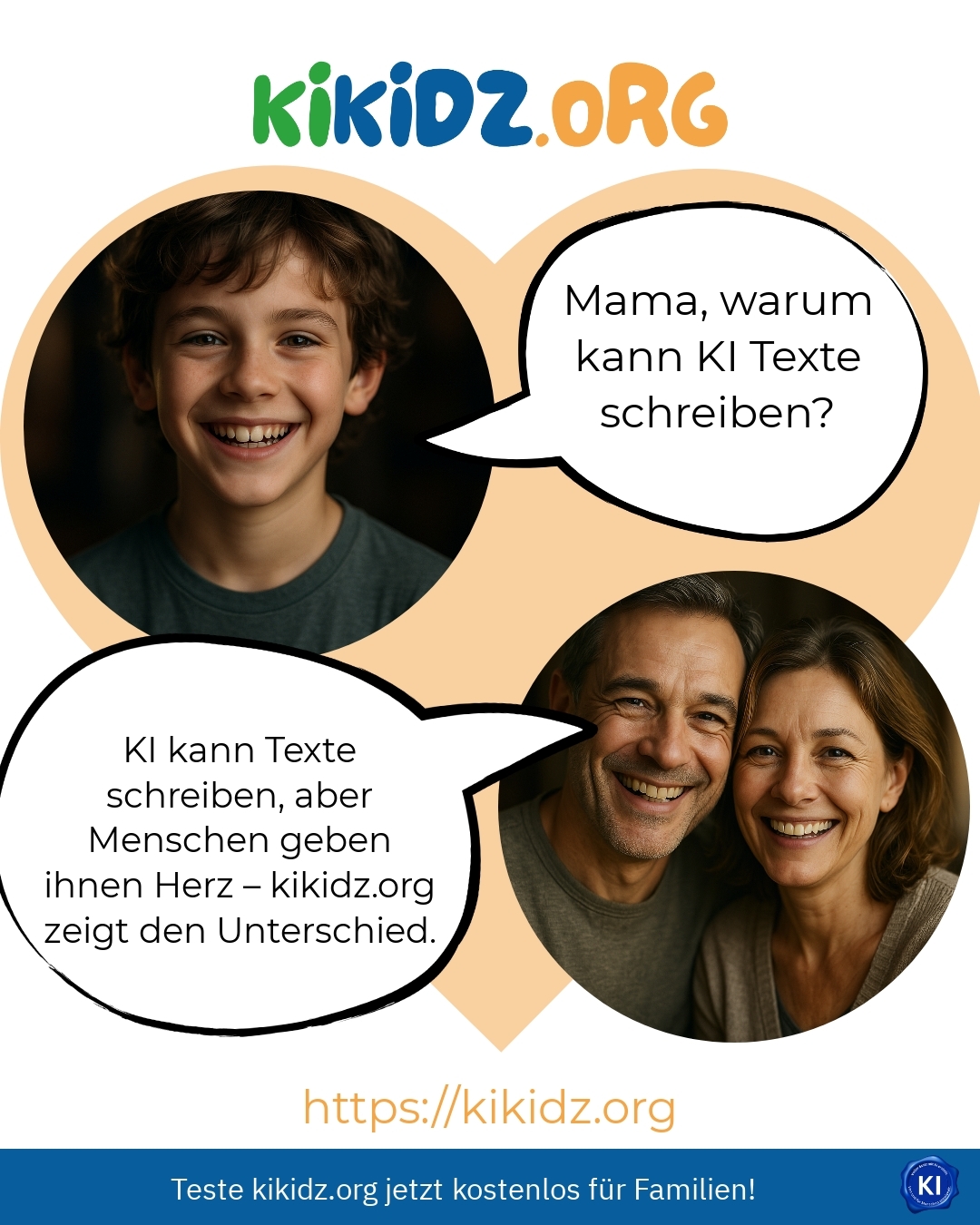When children ask: „Mum, why can AI write texts?“, a deep interest in the ability of computers to understand and generate human language is revealed. This question touches the heart of artificial intelligence (AI) and machine learning, which make it possible for computer programmes to create texts automatically.
Basics of AI text creation
AI text generation is based on advanced algorithms and technologies such as natural language processing (NLP) and machine learning. These techniques enable computers to analyse and generate language by recognising and using patterns in large collections of text[1][2]. A key tool here is language models that have learnt to understand the context of words in a sentence and form new, meaningful sentences[1].
One example of the application of AI texting is chatbots that can respond to user requests. If a child asks: „Mum, why can AI write texts?“, one answer could be that AI systems such as chatbots are trained by machine learning to generate human-like texts[1].
Mum, why can AI write texts? - The role of NLP and machine learning
NLP is at the heart of AI text creation, as it enables computers to understand and process human language. Using techniques such as tokenisation and sentiment analysis, AI systems can not only analyse text, but also capture the underlying emotions and contexts[2]. Machine learning makes it possible to create models that learn from extensive data sets and thus form the basis for automated text production[2].
Parents can explain to their children that AI systems such as GPT-3 or GPT-4 analyse huge amounts of text data in order to recognise patterns and generate new texts. These models are so powerful that they can even write creative texts[3][4].
Practical applications and challenges
AI text creation is used in many areas, from the creation of blog articles to automated reports. It can save time and increase productivity by generating large amounts of content in a short amount of time[5]. However, there are also challenges, such as the bias of the training data and the need for editorial post-processing to ensure the quality and relevance of the generated texts[7].
When children ask: „Mum, why can AI write texts?“, parents can also point out the challenges associated with AI text creation. They can explain that while AI systems can write very convincing texts, they cannot create new facts or ideas[4].
Tips for parents: How to explain AI texting
Parents can help their children to better understand AI texting by using simple examples. For example, you can explain that AI systems like chatbots can respond to questions because they have learnt how humans speak and write. Another tip is to involve the children in creating prompts to see how AI systems respond to different requests[6].
Some parents report that they encourage their children to experiment with AI tools themselves in order to develop a deeper understanding of the technology:
BEST PRACTICE for parents and teachers is to actively involve children in the process of AI text creation. For example, they can formulate a prompt together and see how the AI reacts to it. This not only promotes an understanding of the technology, but also encourages children's creativity and critical thinking.
My analysis
The question „Mum, why can AI write texts?“ is an expression of interest in the ability of computers to understand and generate human language. By understanding the basics of AI texting, parents can help their children better understand this technology and recognise its capabilities and limitations. The best training on AI text generation is provided by Kikidz, which helps parents and teachers to prepare children for the challenges of the digital world.
Further links from the text above:
For more information on AI text creation and machine learning:
Text generation: Definition & AI
For more information and if you have any questions, please contact Contact us or read more blog posts on the topic Children and artificial intelligence here. Click here for the courses: Children and artificial intelligence courses
















